Advertiser Disclosure: Eye of the Flyer, a division of Chatterbox Entertainment, Inc., is part of an affiliate sales network and and may earn compensation when a customer clicks on a link, when an application is approved, or when an account is opened. This relationship may impact how and where links appear on this site. This site does not include all financial companies or all available financial offers. Opinions, reviews, analyses & recommendations are the author’s alone, and have not been reviewed, endorsed, or approved by any of these entities. Some links on this page are affiliate or referral links. We may receive a commission or referral bonus for purchases or successful applications made during shopping sessions or signups initiated from clicking those links.
I’ve encouraged parents with children under age two to travel as much as possible. Why? Because kids don’t require their own seats on many U.S. domestic flights (and some international flights) until they turn two years old.
As long as they don’t take up a seat and can sit in the lap of a responsible adult (i.e., a parent, guardian, another family member, etc.), kiddos can fly free until they’re two.
But now there’s a renewed effort to ban lap children on U.S. airlines. An uptick in recent incidents involving injuries caused by turbulence seems to be the impetus for the Association of Flight Attendants’ (AFA-CWA) new push for all passengers to have their own seats.
Thirty-six passengers sustained injuries during a Hawaiian Airlines flight that experienced significant turbulence during December 2022. A few weeks later, several passengers were injured when a Lufthansa flight experienced heavy turbulence. A private plane’s passenger died when their plane encountered severe turbulence. (Business Insider tells us climate change is causing the increased turbulence.)
FAA Rules vs. Recommendations
As Paddle Your Own Kanoo’s Mateusz Maszczynski notes, “Unlike many international regulators, the FAA prohibits the use of an infant lap belt that goes around the infant and attaches to the seatbelt of their parent or guardian. The FAA says studies show that infant lap belts can cause undue stress in the event of a sudden deceleration but that leaves parents having to hold onto tight to their child in the event of severe turbulence.”
That said, the FAA writes specifically states, “The safest place for your child under the age of two on a U.S. airplane is in approved child restraint system (CRS) or device, not in your lap. Your arms aren’t capable of holding your in-lap child securely, especially during unexpected turbulence, which is the number one cause of pediatric injuries on an airplane. (Bold mine.)
The FAA strongly urges you to secure your child in an approved CRS or other approved device for the entirety of your flight.”
We used a CRS for our daughter shortly after she turned two when we had to purchase a seat for her. Before that, she was on our laps. (And now I kind of feel like an awful parent.)
So, what’s the solution?
If Sarah Nelson’s union has its way, travelers flying with kids under two will need to purchase a ticket for those children and secure them in their own restraints. (Is buybuy BABY somehow tight with the flight attendants union?)
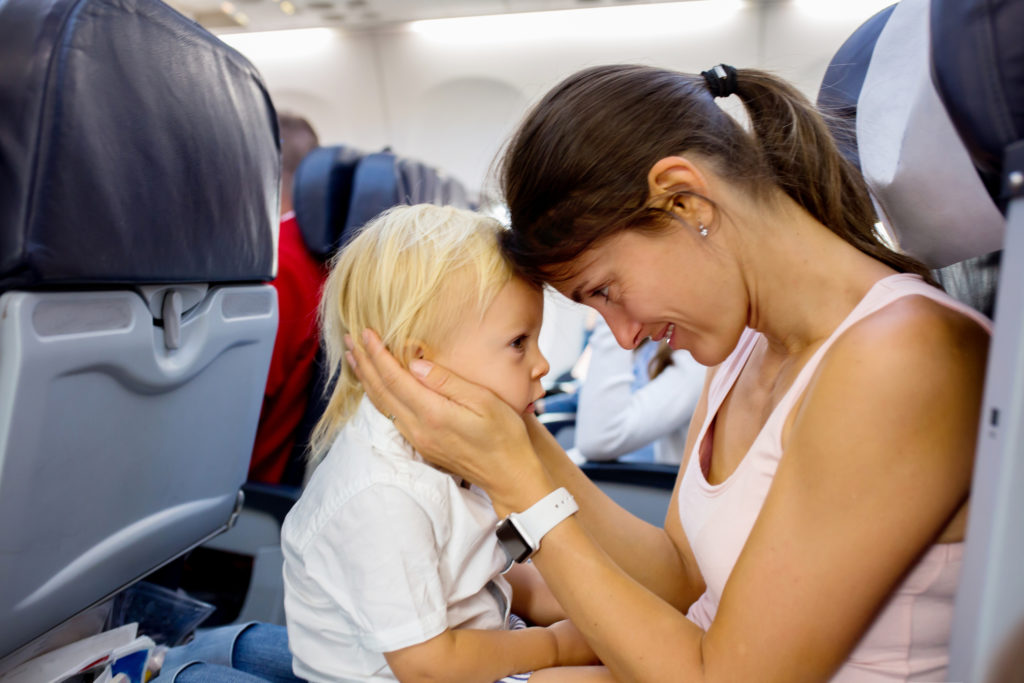
I think many parents would say, I’ll pay anything for my kid to be safe! But when confronted with the prospect of buying another airfare and approved child restraint device (if a car seat doesn’t cut it), I foresee a bunch of folks saying Let’s not get dramatic here and starting making us spend more money…
I admit it: I figured the chance of our daughter — or anyone — sustaining injuries during our flights was very remote. (And, I believe, it still is.) So, we took our daughter around the country as a lap child.
Would airlines offer discounts for seats occupied by a child under two? How would that be enforced?
Not All Kids Will Be in Seats
Please allow me to play Devil’s advocate for a minute.
Some kids don’t do well sitting for long durations in plane seats. They want to traipse up and down the aisle — either walking on their own or in the arms of a parent. They want to sit on a parent’s lap for physical and/or emotional comfort. Feeding babies is — in our opinion — much easier while cradling the infant.
So, unless passengers are warned ahead of time that ugly turbulence is coming, I don’t know of a perfect solution to solving injuries. One would think the pilots and air traffic control would try to work a way around the issue. (But I’m a points, miles, and travel blogger — not a pilot or ATC. What do I know?)
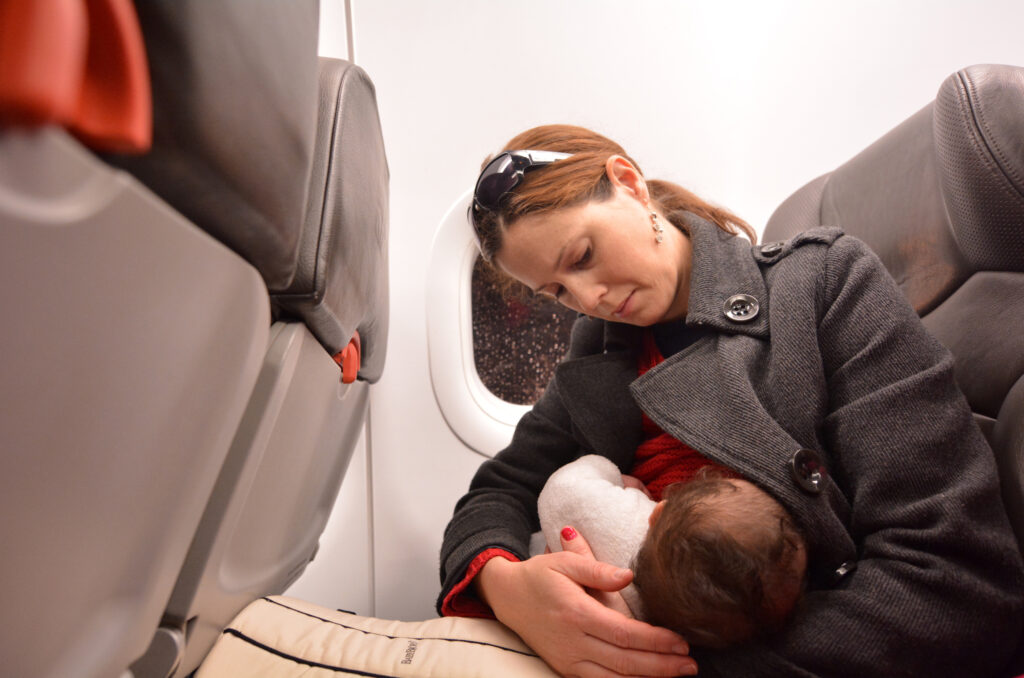
If a parent holds an infant while the little tyke is feeding, the kid’s own seat and restraint system won’t do a darn bit of good if a flight suddenly drops or encounters otherwise bumpy air.
And, pray tell, what good would a kid’s own seat and restraining device do to prevent them from being struck by projectiles? I feel that holding my child helps me shield her from such items as flying phones, tablets, and shoes.
But I agree that kids in child restraints could reduce injuries to our little ones.
Final Approach
Recent high-profile incidents during which passengers were injured because of severe turbulence are behind an Association of Flight Attendants (AFA-CWA) push to ban lap children. Kids under two would need their own seats and be securely fastened into some kind of restraint system.
But will that be enough to truly make everyone safer?
The Comments section is below. Let’s hear your thoughts. (Keep it clean and respectful! Also, our schedule is a little whacky this week; please don’t take offense if your comment takes a while to show up on the blog.)
Advertiser Disclosure: Eye of the Flyer, a division of Chatterbox Entertainment, Inc., is part of an affiliate sales network and and may earn compensation when a customer clicks on a link, when an application is approved, or when an account is opened. This relationship may impact how and where links appear on this site. This site does not include all financial companies or all available financial offers. Opinions, reviews, analyses & recommendations are the author’s alone, and have not been reviewed, endorsed, or approved by any of these entities. Some links on this page are affiliate or referral links. We may receive a commission or referral bonus for purchases or successful applications made during shopping sessions or signups initiated from clicking those links.



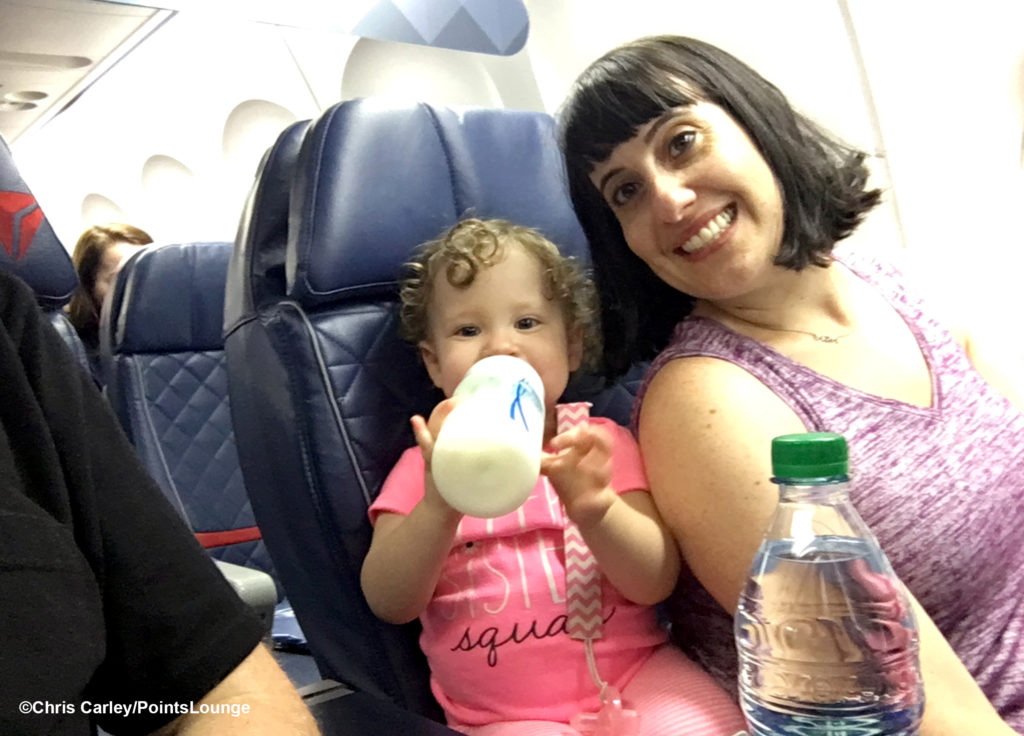
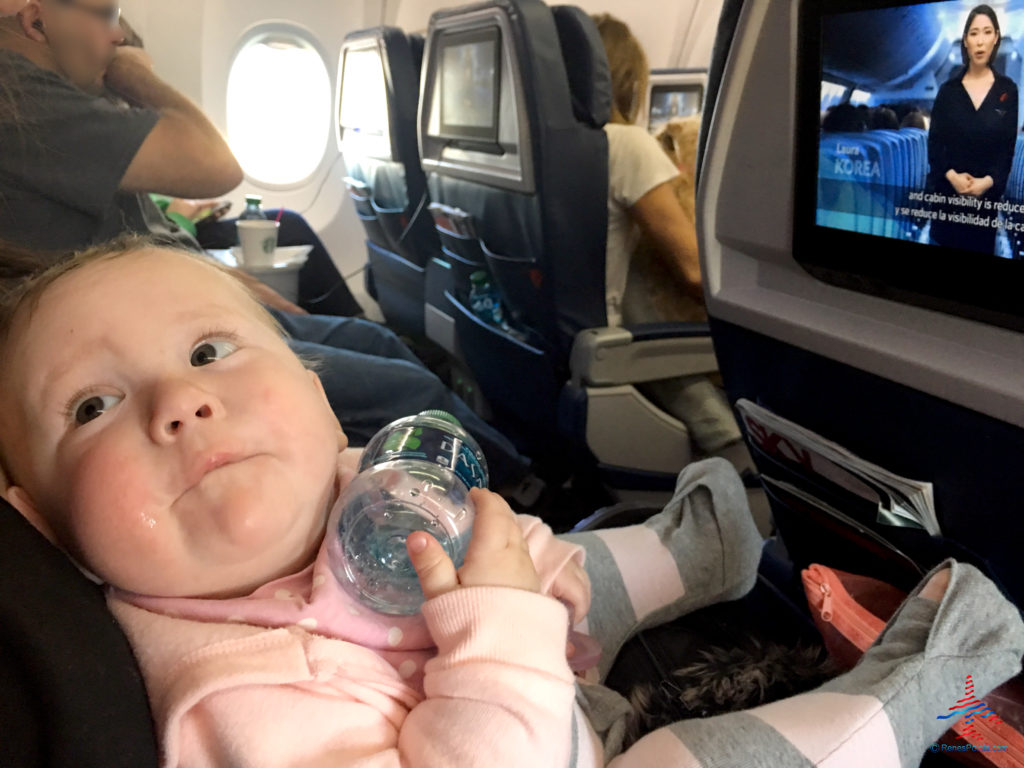
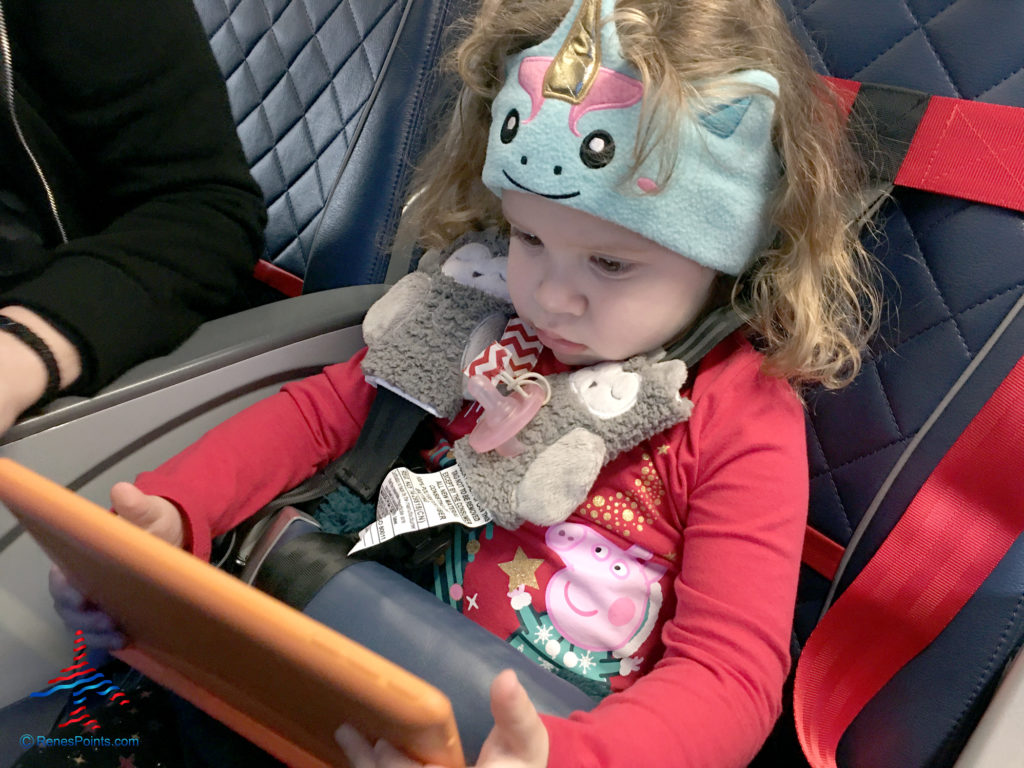









Yes.
If we can’t even recline a seat an inch why is an untethered sticky child allowed to freely sit on a lap.
Do we now the stats on the infant lap belt -used in foreign carriers? I would hate to have to buy a $$$$ ticket to have a seat for my under 2 little one and then after take-off or landing they want to sit ony on your lap!!
there is another aspect! If a separate ticket is required for babies, many parents will drive instead. Since car travel is unbelievably dangerous compared to air travel, requiring babies to be in their own seat will lead to more deaths (more parents will drive, even for long distances, thus mny more will die or be injured in car crashes than would ever be with the current rules requiring seats only for toddlers over 2). Injuries and deaths are extremely rare in commercial air travel. It is (turbulence aside, radiation aside) one of the safest places you can be if you are traveling.
Excellent point!
The airlines are not sued for a car accident but they are if it is an accident on an airplane…liability management. If people weren’t so fond of suing I imagine it would not be as big of an issue. And yes, car travel is more dangerous and it likely that that more will be killed by car than by plane, but again, it is risk management by the airlines. You can’t blame them.
The diversion to cars from airplanes if this policy is implemented will cause over 100 infant deaths per year according to multiple studies done by the FAA. This is why car seats will never be mandated. The FAA cannot make a rule that causes more harm than good.
The Baby B’Air Flight Vest has been sold for 20÷ years. The FAA allows it for use in flight. At least 8 parents have told us this lap restraint saved their child from injury.
The AFA union knows the FAA tested 8 car seats in crash tests and 6 out of 8 seats failed their crash tests.
Baby B’Air was tested at Kettering University using FAA test parameters and passed with no serious injuries to child or parent using a Baby B’Air.
Michael Quiello, (Safety VP Avelo Airlines), the Air Line Pilots Association, Aircraft Rescue & Firefighting Working Group, Airline Ambassadors, National Air Disaster Alliance & Foundation, Dr Alexander Rotta (pediatric head Duke University medical), and former U.S.Transportation Dept Inspector general Mary Schiavo are among the MANY safety experts who recommend and/or endorse Baby B’Air for lap children BOTH INFLIGHT AND. TAKEOFF/LANDING.
BABY B’AIR has faster evacuation times versus car seats, proven by tests at San Bernardino Emergency Training Center.
The firefighters told us a baby in a Baby B’Air vest can be evaluated much quicker than from a car seat.
Car seats do NOT solve the problem. Unless the FAA mandates a baby never come out of the car seat, an approved seat location is available, and the car seat will fit the airline seat then this is NO SOLUTION.
I’ve seen many international carriers that carry a separate seat belt with loops at each end that slides into the main seat belt. This way the parent and lap infant are both secured, while the infant can be still be held. We’ve used it several times during our travels and it worked out great. I have yet to see this used on any domestic carriers.
“Recent high-profile incidents during which passengers were injured because of severe turbulence are behind an Association of Flight Attendants (AFA-CWA) push to ban lap children.”
Nothing the AFA-CWA does is altruistic. There must be some issue affecting flight attendants that is behind this.
We traveled several times with babies on our laps (or more often in bassinet seats that foreign carriers provide) and it was fine. We even traveled on Concorde (using points of course) with a 4 month old and it wasn’t free as it was an international flight. The person in front was during the flight about babies on flights and at the end of the flight when she saw our baby she said that she couldn’t believe there was a baby on board, she was so quiet!
In my opinion the status quo is fine.